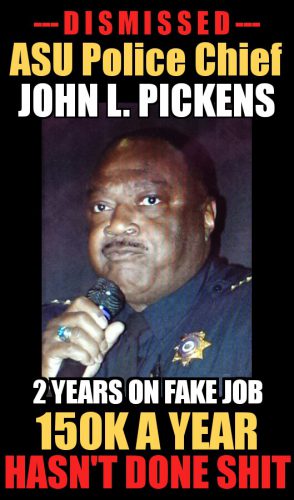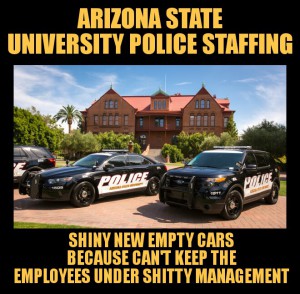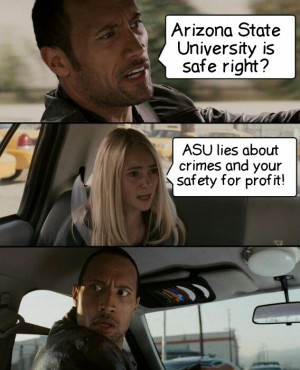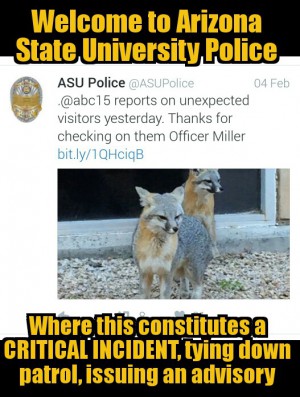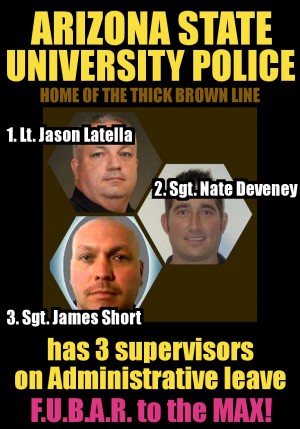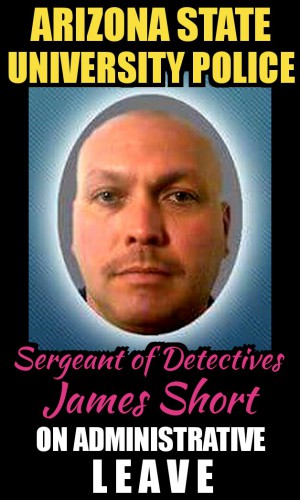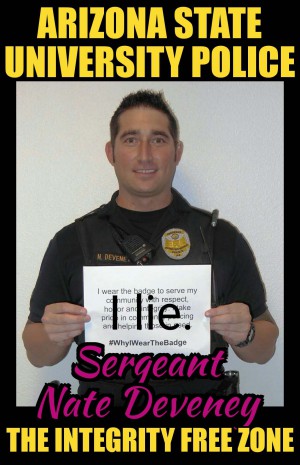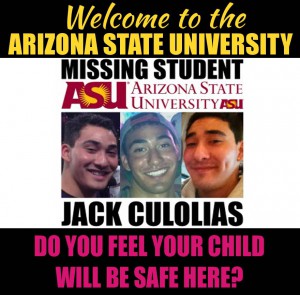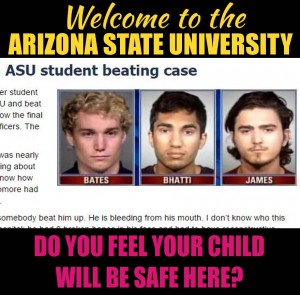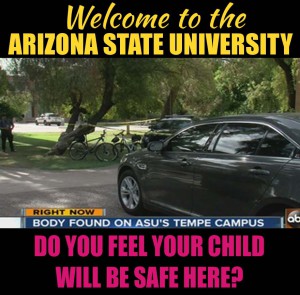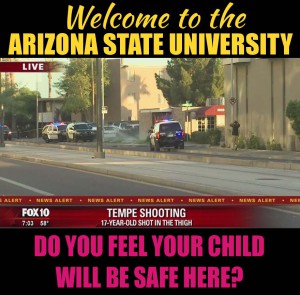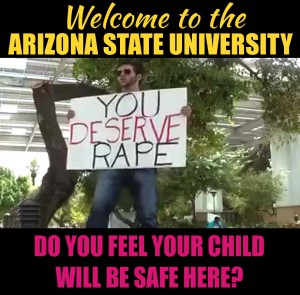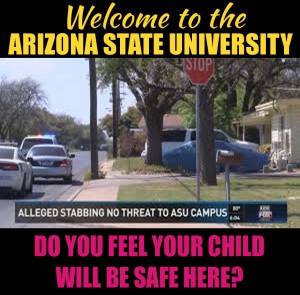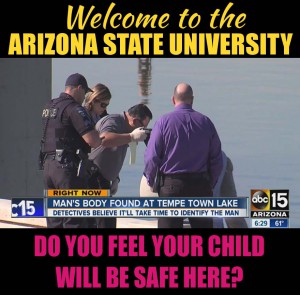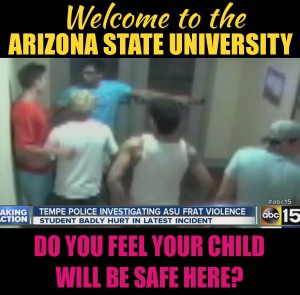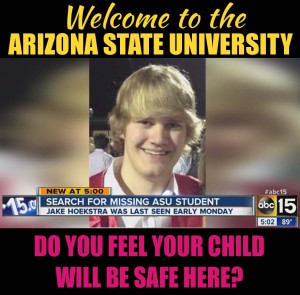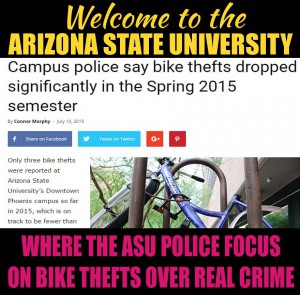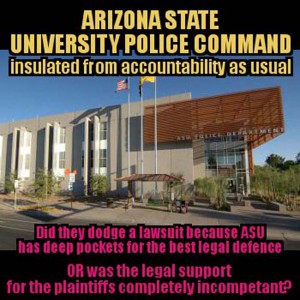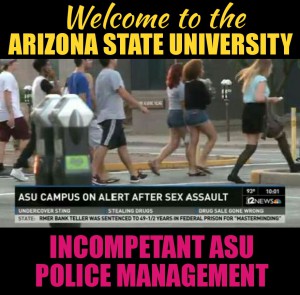The watchdogs in the media are on the trail of the curious case of Mr. John Pickens, the defrocked Chief of the Arizona State University Police Department. They are on to the fact the Arizona State University administration is paying him a 155,000 a year, for two years now, to sit on his fat ass and literally do nothing. It is typical of the systemic waste and corruption waiting to be uncovered at the university. How many other witness protection programs like this are being ran out of the Fulton Center?
We would like to congratulate Ray Stern from the New Times for staying on the case of this institutional state corruption and be aware, and believe us, there’s more where this is!
Maybe Arizona governor Doug Ducey should be looking into this avenue of state corruption. Governor Ducey, why are Michael Crow and Morgan Olsen wasting 155,000 a year, for two years ongoing, to keep dismissed ASU Police Chief, John L. Pickens in the silent witness protection program? What corrupt information are they hoping to keep secret?
Many current and former ASUPD alumni know the history of John L. Pickens at ASUPD and the secrets he’s keeping quiet must be significant to employ him at $155,000 to do nothing while students get tuition/fee/inflation increases, while useful staff are reduced, and the Arizona State University Police Department continues to daily struggle to patch holes in shift schedules by routinely offering paid overtime. How many years can the department continue to operate like this?
The new times exposed this issue initially here two years ago: http://www.phoenixnewtimes.com/news/ex-police-chief-john-pickens-cushy-asu-job-provides-security-for-pickens-7688403
The new story is here: http://www.phoenixnewtimes.com/news/lack-of-video-of-knife-wielding-hostage-taker-exposes-asus-security-camera-shortage-8903566
Lack of Video of Knife-Wielding Hostage Taker Exposes ASU’s Security-Camera Shortage

More than two years after Arizona State University’s former police chief took the helm of a new program that promised to increase the use of video cameras on campus, it’s unclear how much expansion has occurred — if any.
The lack of video security around ASU’s Tempe campus was exposed on Wednesday, December 7, when a knife-wielding man held a faculty member in her third-floor office in the Language and Literature building before releasing her unharmed. The suspect remains at large. ASU police spokeswoman Katy Harris confirmed on Monday that no video evidence of the man was captured, either inside or outside of the building.
In the summer 2014, John Pickens stepped down unexpectedly from his post as ASU police chief a few weeks after the violent arrest of ASU English professor Ersula Ore by an ASU officer. But Pickens didn’t move far: ASU installed him in a new office, gave him the title of director of University Security Initiatives, and continued paying him his $155,000 annual salary. School records showed that his duties were supposed to include planning for the expansion of ASU’s video-camera system, assisting “appropriate staff” to ensure ASU is prepared for emergencies, and collaborating with staff to review design plans for surveillance cameras in the renovated Sun Devil Stadium.
But with a full year under Pickens’ belt, ASU can offer no list of his accomplishments, nor any timetable for achieving any of University Security Initiatives’ goals. What’s more, the program doesn’t seem to exist on paper aside from documents showing that Pickens was selected to lead it, and ASU has no record of any budget for the “initiatives.”
On Monday, in response to New Times‘ request for information about the status of the video-camera expansion, Pickens’ job, and University Security Initiatives, ASU released a statement indicating that there’s room for improvement:
“The safety of the Arizona State University community is something we take very seriously and we continually look for and employ new methods to improve,” reads the statement, provided to New Times by ASU spokesman Gerald Gonzalez. “Because we have 5 open campuses with 25 million square feet of space, we ask all members of the ASU community to immediately notify campus police if they witness suspicious activity or individuals.”
Gonzalez wants students to be aware of the university’s blue-light stations, which allow students who feel threatened to push a button and receive a police response 24 hours a day.
As last Wednesday’s incident demonstrated, the police response can be less than perfect.
A person matching the description of the knife-carrying man was seen an hour before the faculty member’s brief kidnapping, trying faculty office doors on the building’s fourth floor. A professor called police, who responded six minutes later but couldn’t find the man. It isn’t known whether he remained in the building or departed and then returned an hour later, just before 1:30 p.m.
The suspect is believed to be Hispanic or Native American, in his 20s, about 5-foot-9 with a medium build. He was wearing a black-and-white bandanna, a dark sweatshirt, and blue jeans. He had acne on his forehead and bloodshot eyes, ASU police said.
Until the promised camera expansion occurs, ASU encourages students and faculty to download the LiveSafe app that allows users to send ASU police real-time anonymous tips, including video.
Some faculty members and students criticized the decision by authorities not to broadcast a mobile-phone alert about the suspect. Students for Self-Defense at ASU, a group that seeks the repeal of the campus weapons ban, wrote on Facebook over the weekend that the incident “highlights the fact that ASU’s weapons prohibition policies don’t actually work the way they’re meant to.”
ASU policy bans guns and knives with blades longer than five inches but allows consumer-type self-defense sprays.

